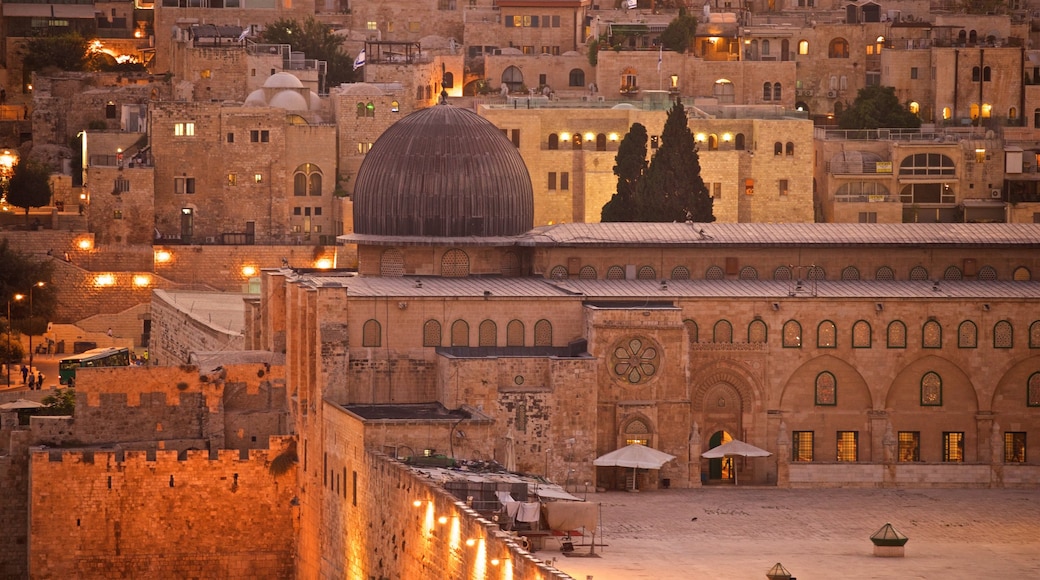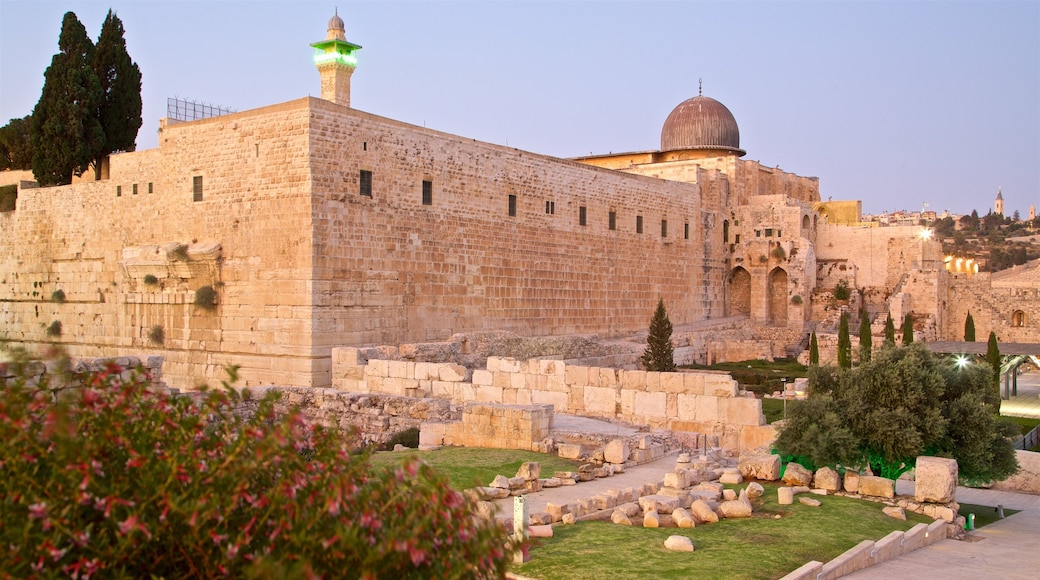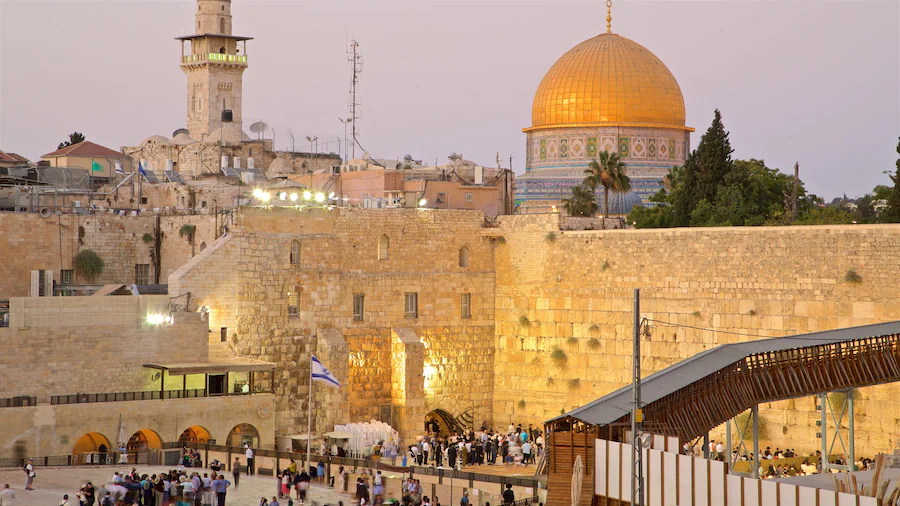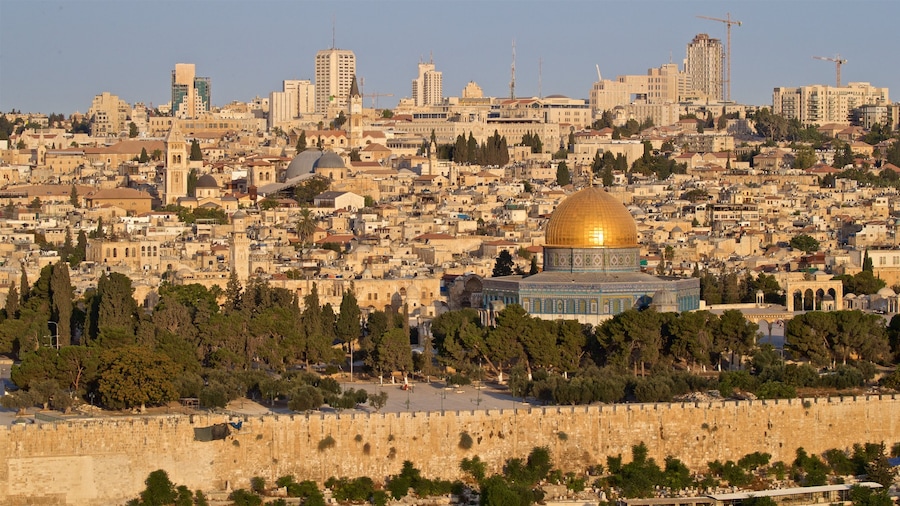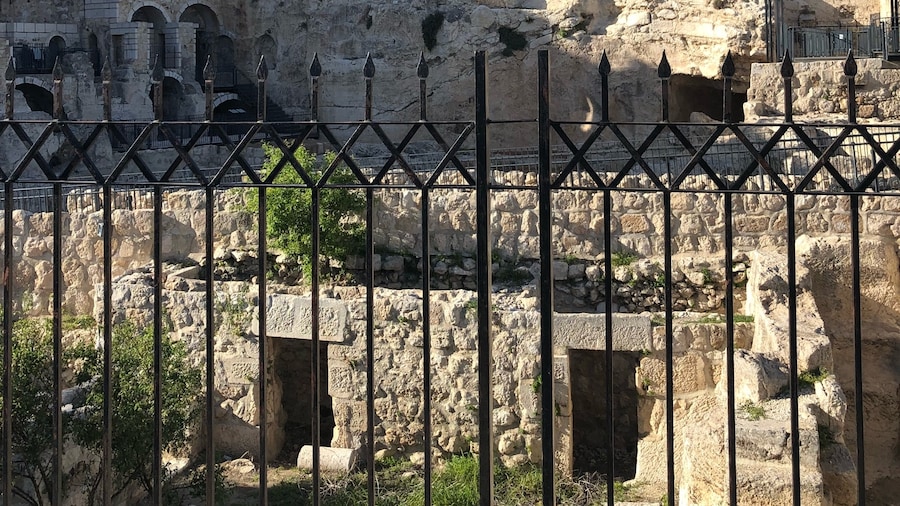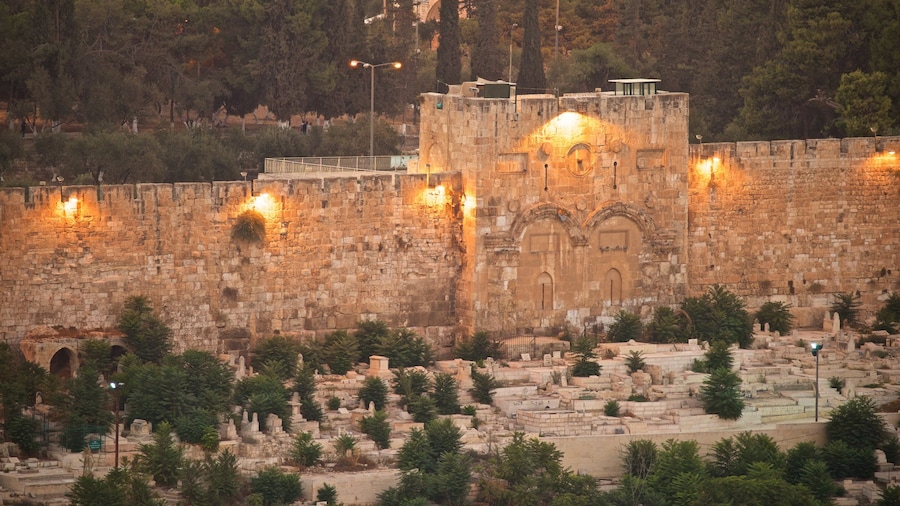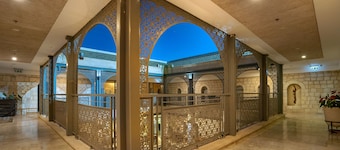Part of the sacred Temple Mount site, this lead-domed structure is a fully functioning mosque. It is among the holiest sites in the Islamic world.
A long-venerated place of worship for Muslims, the Al-Aqsa Mosque is one of the important religious structures located on the Temple Mount. The site is known in Arabic as Haram esh-Sharif (the Noble Sanctuary). View the rectangular, Islamic-influenced design of the building and learn about its long and fascinating history.
The mosque was built in the early 8th century and was subsequently destroyed and rebuilt after a series of earthquakes. Following the Crusaders’ conquest in A.D. 1099, the mosque was temporarily used as a headquarters for the Knights of Templar. In 1951, King Abdullah of Jordan was assassinated here. To find out more details about the history of the site, consider joining a guided tour of the Temple Mount.
Discover why the site of the mosque is so important to followers of Islam. The mosque’s Arabic name translates as “the farthest mosque.” The name references a chapter of the Quran known as “The Night Journey,” which describes Muhammad’s travels from Mecca to “the farthest mosque,” and ultimately to paradise.
Look for the mosque’s large dome, identifiable by its dark lead coating. Inside, the mosque features more than 100 stained-glass windows, a carved mihrab (prayer niche) and a ceiling decorated with Islamic and Byzantine designs.
Listen for the call to prayer, which you will hear coming from loudspeakers mounted on the mosque’s minarets five times a day. During prayer times, up to 5,000 worshippers enter to perform their daily prayer rituals.
Non-Muslims should enter Temple Mount through the Mughrabi Gate near the Western Wall in Jerusalem’s Old City. Dress modestly to ensure access to the site. Visitors may be required to show their passports. Non-Muslim visitors may not be allowed to enter the mosque, though anyone can view the mosque from outside.
Mount Temple is open to visitors for several hours a day, from Monday through Thursday. The site closes to the public during key religious holidays.
